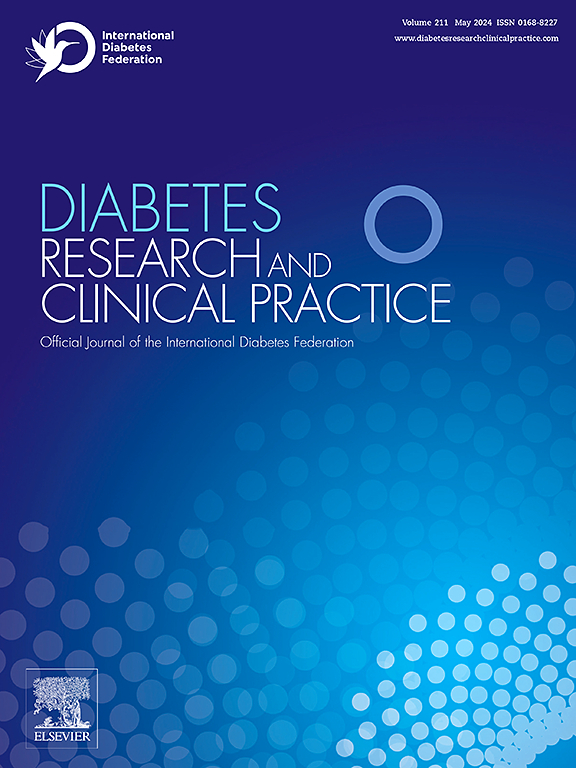Intermittently scanned continuous glucose monitoring adoption decreases diabetic ketoacidosis hospitalizations and healthcare costs in adults with type 1 diabetes
IF 6.1
3区 医学
Q1 ENDOCRINOLOGY & METABOLISM
引用次数: 0
Abstract
Aims
This study analyzed the impact of implementing intermittently scanned continuous glucose monitoring (isCGM) on hospitalization rates for diabetic ketoacidosis (DKA) among adults with type 1 diabetes mellitus (T1DM). Additionally, it assessed the direct costs and savings associated with these hospital admissions.
Methods
A comprehensive regional dataset from Andalusia, Spain, was used to extract emergency care codes for DKA in individuals with T1DM who started using isCGM between January 1, 2020, and December 31, 2021. Hospitalization rates for DKA were compared during the 12 months before and after isCGM implementation to determine population-level incidence rates.
Results
The study included 13,616 individuals with T1DM (mean age: 43.7 ± 13.5 years, 46.9 % women). The incidence rate of DKA hospitalizations decreased from 79.26 to 40.28 admissions per 10,000 person-years (rate ratio [RR]: 0.5 [0.40–0.63]). The most significant reduction was observed in patients with HbA1c ≥ 10 %, with 136 fewer events per 10,000 person-years. This reduction resulted in an estimated cost saving of €782,836.81.
Conclusion
The implementation of isCGM significantly reduced DKA hospital admissions in adults with T1DM, leading to substantial cost savings. These findings highlight the clinical and economic benefits of isCGM in improving patient outcomes and optimizing healthcare resources.

采用间歇性扫描连续血糖监测可降低1型糖尿病成人酮症酸中毒住院率和医疗保健费用
目的:本研究分析实施间歇性扫描连续血糖监测(isCGM)对1型糖尿病(T1DM)患者糖尿病酮症酸中毒(DKA)住院率的影响。此外,它还评估了与这些住院有关的直接费用和节省。方法使用来自西班牙安达卢西亚的综合区域数据集,提取在2020年1月1日至2021年12月31日期间开始使用isCGM的T1DM患者的DKA急诊护理代码。比较isCGM实施前后12个月内DKA的住院率,以确定人群水平的发病率。结果纳入13616例T1DM患者(平均年龄:43.7±13.5岁,女性占46.9%)。DKA住院率从79.26例/ 10000人年下降到40.28例/ 10000人年(比率比[RR]: 0.5[0.40-0.63])。在HbA1c≥10%的患者中观察到最显著的降低,每10,000人年减少136例事件。这一减少导致估计费用节省782 836.81欧元。结论isCGM的实施显著降低了成人T1DM患者的DKA住院率,节省了大量费用。这些发现强调了isCGM在改善患者预后和优化医疗资源方面的临床和经济效益。
本文章由计算机程序翻译,如有差异,请以英文原文为准。
求助全文
约1分钟内获得全文
求助全文
来源期刊

Diabetes research and clinical practice
医学-内分泌学与代谢
CiteScore
10.30
自引率
3.90%
发文量
862
审稿时长
32 days
期刊介绍:
Diabetes Research and Clinical Practice is an international journal for health-care providers and clinically oriented researchers that publishes high-quality original research articles and expert reviews in diabetes and related areas. The role of the journal is to provide a venue for dissemination of knowledge and discussion of topics related to diabetes clinical research and patient care. Topics of focus include translational science, genetics, immunology, nutrition, psychosocial research, epidemiology, prevention, socio-economic research, complications, new treatments, technologies and therapy.
 求助内容:
求助内容: 应助结果提醒方式:
应助结果提醒方式:


